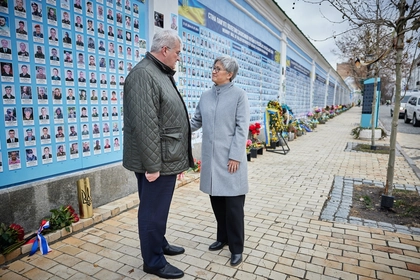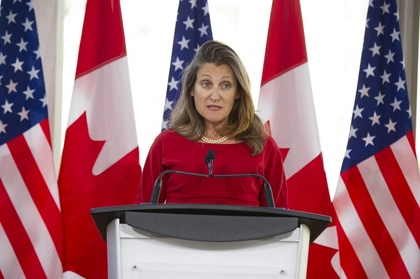Kazakhstan, Kyrgyzstan, Tajikistan, Turkmenistan, and Uzbekistan seek to establish greater relations with the United States. President Joe Biden and former President Donald Trump have different approaches to American interactions with these Central Asian states.
With nearly 40 days to go until the 2024 US presidential election, countries around the world will be watching anxiously as Americans vote for their new leader. Dignitaries and diplomats across the globe have studied the policies and actions of both presidential candidates. These leaders want to be best prepared for the outcome of the presidential election, and they want to ensure that a policy has been drafted in place so that they know how to best interact with the victor of the US presidential election.
One of the areas in the world that has particularly taken notice of the US presidential election is Central Asia. Following the collapse of the Soviet Union, the newly established republics needed to determine if they would develop closer ties with the Western world or maintain a strong relationship with Russia.
Initially, the five Central Asian countries opted to work closely with the Russian Federation. For several decades, these countries established strong trade relations. Their economies rely heavily on Russia as it is Central Asia’s second-largest trade partner. In addition, Russia has formed a strong bond with Kazakhstan, Kyrgyzstan, Tajikistan, Turkmenistan, and Uzbekistan over energy. The Russians have drafted and signed numerous contracts to export gas to the Central Asian states, creating a forced regional bond. Finally, the Russian Federation understands Central Asia is filled with rich minerals and rare earth elements.

Australian Foreign Minister Visits Kyiv, Confirms Reopening of Embassy
Like Russia, China has a deep economic relationship with Central Asia. China is “Central Asia’s largest gas consumer,” meaning the five Central Asian states rely on their energy exports to China. Finally, the Chinese hope to access Central Asia’s natural minerals.
But recent developments have seen the Central Asian states distance themselves from the Russian Federation. In February 2022, Russia launched a full-scale invasion of Ukraine. Over the past two and a half years, the international community has imposed stiff sanctions on Russia to punish it for its war. As a result, the Russians lost hundreds of billions of dollars. Over one thousand businesses have left Russia, which has further damaged Russia’s economy and trade. In addition, the Russians have lost tens of billions of dollars in military and defense equipment, and the Russians have had over 640,000 casualties. In short, the war has been a massive failure for Russia. It has also damaged the Russian Federation’s “image as an invincible superpower.”
This has led the Central Asian states to slowly distance themselves from Russia. The five Central Asian states also opt not to deepen their relationship with China. Instead, they seek to build new relationships with countries around the globe. One of these new partners is the United States.
During the Biden-Harris administration, senior officials have met with their Central Asian counterparts on several occasions. When Russia’s full-scale invasion of Ukraine began, US Secretary of State Antony Blinken spoke with the foreign ministers from Kazakhstan, Kyrgyzstan, Tajikistan, and Uzbekistan. In their meeting, they discussed strategies on how to aid Ukraine during the war, and the US Secretary condemned Russia’s violent acts. The session then shifted to America’s relationship with Central Asia. During the meeting, Secretary Blinken stated that the United States supports Central Asia’s “sovereignty, independence, and territorial integrity.” He also emphasized the importance of strengthening relations between the United States and the five Central Asian countries.
Following this meeting, Secretary Blinken traveled to Kazakhstan and Uzbekistan to help these countries “develop the strongest possible capacities for their own security, their growing economic prosperity, and the strength and resilience of their societies.” Secretary Blinken also met with Central Asian officials in March 2024, suggesting a renewed interest in America’s relationship with the region.
President Joe Biden has also spoken with leaders from the region. During the United Nations General Assembly in September 2023, the US President met with officials from Kazakhstan, Kyrgyzstan, Tajikistan, Turkmenistan, and Uzbekistan. He, along with Secretary Blinken, discussed the importance of “strengthening [their] counterterrorism cooperation, expending [their regional economic connectivity, and exploring the potential for a new critical minerals dialogue.” The meeting was significant as it was the first time a US president met with senior officials from Central Asia.
Finally, the Democratic Party has committed to strengthening the relationship between the United States and Central Asia. During the Democratic National Convention in Chicago in August, the Democratic National Committee announced its party platform for the 2024 US presidential election. In the document, the Democrats stated they will continue strengthening their relationships with allies and partners, including those in Asia. They will work to counter “Russia’s disruptive actions” by constraining Russian threats to countries throughout the world.
Similarly, the United States, its allies, and partners will “guard against China taking advantage of America’s openness.” The Democrats said they will work with America’s allies and partners to “manage competition with China.”
Meanwhile, former President Donald Trump and his administration had a different interaction with Central Asia. According to the George Washington University’s Central Asia Program, the Trump-Pence administration “put little effort into developing a new policy approach towards Central Asia.” For example, several senior and midlevel political appointees were not selected to fill critical positions in the US Department of State or the US Agency for International Development. For some of these unfilled positions, these individuals would have met with dignitaries and high-ranking officials from Central Asia. Instead, the Trump-Pence administration made significant budget cuts to the US Department of State, USAID, and several other government agencies. This meant that these positions then went unfilled.
It also took time for senior cabinet officials to meet with their Central Asian counterparts. For example, former President Trump’s first US Secretary of State, Rex Tillerson, did not meet with his counterparts from Central Asia. Aside from the decision not to fill several critical positions within the US Department of State and USAID in Washington, DC, several positions for Central Asia and other parts of Asia were not filled. This made it difficult for the United States to engage with these countries.
The Trump-Pence administration would then finally announce its strategy on Central Asia in February 2020. The plan outlined the need for “promoting regional connectivity, supporting reforms and human rights, and enabling US investment and development assistance.”
Then-US Secretary of State Mike Pompeo had also traveled to the region to meet with his counterparts in Kazakhstan and Uzbekistan. During his visit, he discussed American “support for the sovereignty and independence of the Central Asian states.” This suggested that the Trump-Pence administration was now prioritizing Central Asian activities.
But there were some problems. First, the announcement of the strategy was shortly before the coronavirus pandemic. Second, the Central Asian strategy was announced several months before the November 2020 presidential election. This meant there was very little time for the administration to develop its regional policy options.
The plan was also criticized. According to Voice of America, the Central Asian strategy announced by the Trump-Pence administration was “not substantially different from that of its predecessors.” In other words, it was similar to American engagements with Central Asia during the Bush and Obama administrations. In addition, a senior fellow at the Carnegie Endowment for International Peace emphasized that the biggest success of the Trump-Pence plan toward Central Asia was that “there hasn’t been damage done” to the region.
While the strategy failed to materialize during the final year of the Trump-Pence administration, it appears that it has also been de-prioritized. During the Republican National Convention in Milwaukee this July, the Republican National Committee announced its party platform for the 2024 US presidential election. The document did not mention the need to strengthen America’s relationship with its allies and partners. Russia was not mentioned, and the document did not address the need to enhance American relationships to combat China’s influence.
In short, the Trump-Pence and Biden-Harris administrations pursued different policies to enhance America’s relationship with Central Asia. Both political campaigns have noted how they will prioritize America’s relationship with its allies and partners. The actions and policies both administrations took, and the information listed in the political party platforms, should be a good indicator of how the next administration will pursue its relationship with Central Asia.
The leaders of Kazakhstan, Kyrgyzstan, Tajikistan, Turkmenistan, and Uzbekistan will now await the results of the 2024 US presidential election. Time will tell how the US-Central Asia relationship will unfold.
Mark Temnycky is an accredited freelance journalist covering Eurasian affairs and a nonresident fellow at the Atlantic Council’s Eurasia Center. He can be found on X @MTemnycky
The views expressed are the author’s and not necessarily of Kyiv Post.
You can also highlight the text and press Ctrl + Enter






